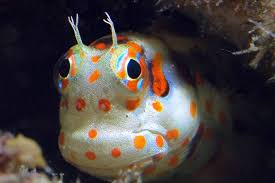Dragons and Symbolism in Traditional Chinese Ink Paintings
The Significance of Dragons in Chinese Art
Dragons (龙, Lóng) have been a central theme in Chinese culture, mythology, and art for thousands of years. Unlike Western dragons, which are often depicted as fearsome and destructive creatures, Chinese dragons symbolize power, wisdom, prosperity, and harmony with nature. One of the most profound ways dragons have been expressed in Chinese culture is through traditional ink paintings (水墨画, Shuǐmòhuà).
Ink wash painting, or shui mo hua, is a classic art form that emphasizes the flow of ink, delicate brushstrokes, and the balance of light and dark. The dragon, as an emblem of the emperor, the elements, and cosmic energy, plays a crucial role in many masterpieces of this genre. Each stroke, curve, and detail in a dragon painting carries deep symbolic meaning, reflecting themes of spirituality, authority, and the interconnectedness of all things.
The Evolution of Dragons in Chinese Ink Paintings
Early Representations: Han and Tang Dynasties (206 BCE – 907 CE)
The earliest depictions of dragons in Chinese art date back to the Han Dynasty (206 BCE – 220 CE), when dragons were drawn in ceremonial objects, murals, and ink paintings on silk scrolls. These early representations were simplistic yet powerful, often showcasing dragons with long, snake-like bodies, sharp claws, and flowing whiskers.
By the Tang Dynasty (618–907 CE), dragon paintings became more refined and detailed. Tang artists, influenced by Buddhist and Daoist beliefs, infused dragons with divine energy. Paintings during this era often featured dragons emerging from clouds, interacting with celestial beings, or controlling the elements.
The Song Dynasty (960–1279 CE): The Golden Age of Ink Dragon Paintings
The Song Dynasty was a pivotal period for Chinese ink painting. Artists like Zhang Zeduan (张择端) and Ma Yuan (马远) mastered the art of expressing movement, depth, and energy through minimal brushstrokes.
- Song Dynasty dragons were often depicted soaring through mist-covered mountains, twisting among ocean waves, or floating in cosmic space.
- The use of negative space in ink wash paintings allowed dragons to appear mystical and ethereal, symbolizing their role as beings of both earth and heaven.
- Calligraphic brush techniques were used to emphasize the fluidity and dynamism of dragons, reinforcing their connection to natural forces like wind, water, and thunder.
The Ming and Qing Dynasties (1368–1912 CE): A Fusion of Tradition and Innovation
During the Ming Dynasty (1368–1644 CE), dragons in ink paintings became bolder and more dramatic. Artists began experimenting with stronger contrasts, richer black ink tones, and intricate line work.
- Ming artists often painted imperial dragons, reinforcing their role as symbols of absolute power. These dragons were frequently depicted with five claws, a detail reserved exclusively for the emperor’s insignia.
- Qing Dynasty painters (1644–1912 CE) embraced a more expressive style, incorporating gold and red pigments into ink paintings to enhance the divine aura of dragons.
Symbolism of Dragons in Traditional Chinese Ink Paintings
1. The Dragon as a Cosmic Symbol
In Daoist and Confucian thought, dragons represent the forces of yin and yang—the balance of opposing but complementary energies. Many ink paintings feature dragons entwined with clouds, symbolizing their connection to the heavens.
- Dragons in swirling mists symbolize the mysterious and unattainable nature of wisdom.
- Dragons riding the wind represent freedom, adaptability, and limitless potential.
2. Dragons and Water: Masters of Rain and Rivers
Chinese dragons are often linked to rivers, lakes, and the sea, embodying the element of water. They are believed to be guardians of rainfall, ensuring bountiful harvests.
- Dragons emerging from waves symbolize control over chaos, often representing a wise ruler or an enlightened sage.
- Dragons in stormy skies reflect nature’s unpredictable power, reinforcing the Daoist concept of harmony with the natural world.
3. The Imperial Dragon: A Symbol of Power
In imperial China, dragons were closely associated with the emperor and the ruling dynasty. Five-clawed dragons (五爪龙, Wǔ Zhǎo Lóng) were exclusive to the emperor, while four-clawed dragons were used by nobles and officials.
- Paintings of imperial dragons among celestial clouds symbolize the divine right of rulers.
- Dragons holding a pearl represent the pursuit of wisdom, enlightenment, and ultimate authority.
4. Dragons in Spiritual and Mythological Themes
Many ink paintings depict dragons in sacred landscapes, reinforcing their role as protectors of the spiritual world.
- Dragons guarding temples or mountains symbolize spiritual protection and divine intervention.
- Dragons interacting with phoenixes (龙凤呈祥, Lóng Fèng Chéng Xiáng) depict the balance of masculine and feminine energies, symbolizing peace and prosperity.
Techniques Used to Depict Dragons in Ink Paintings
1. Calligraphic Brushstrokes (书法笔法)
- Ink paintings often utilize calligraphic strokes to give dragons a sense of movement and energy.
- Swift, bold strokes capture the ferocity of a dragon, while soft, flowing lines depict its grace and wisdom.
2. Contrast of Light and Dark (墨色浓淡)
- By adjusting the thickness of ink, artists create depth and texture.
- Dark, heavy ink outlines the dragon’s scales and eyes, while lighter ink creates the illusion of mist and clouds.
3. Negative Space (留白)
- Traditional ink paintings often leave empty spaces, allowing viewers to imagine the unseen parts of the dragon, reinforcing its mystical nature.
4. Symbolic Positioning and Composition
- Dragons are often placed above mountains and rivers, signifying their dominance over nature.
- Some paintings position dragons next to sages or emperors, highlighting their role as divine protectors.
The Legacy of Dragons in Chinese Ink Painting
Despite the modernization of art, traditional dragon ink paintings continue to inspire contemporary artists. Today, calligraphy artists, digital painters, and tattoo designers incorporate classic dragon motifs into their work, blending ancient traditions with modern creativity.
Many Chinese museums and art collectors preserve dragon ink paintings as cultural treasures, showcasing their role in Chinese philosophy, history, and imperial symbolism. The enduring presence of dragons in ink paintings serves as a bridge between the past and the present, keeping their spiritual and artistic significance alive.
Conclusion
Dragons in traditional Chinese ink paintings are more than just mythical creatures—they are symbols of wisdom, power, balance, and harmony with nature. Whether floating among clouds, commanding the seas, or guarding sacred temples, dragons represent the universal forces that govern life and destiny. Their depiction through fluid brushstrokes, expressive ink tones, and delicate details makes them one of the most captivating elements in Chinese artistic heritage.
As long as ink flows and brushstrokes dance on paper, the mystical legacy of dragons will continue to inspire generations of artists and admirers around the world.



